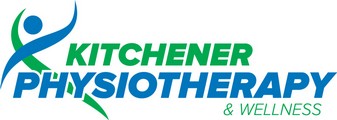Q: I am getting ready to have surgery for a rotator cuff tear. The surgeon said I would be wearing a pillow splint under my arm for "four to six weeks." I'm just wondering how they know which it is: four, five, or six weeks? I'd like to be done with all this as quickly as possible.
A: Here's the drill after arthroscopic rotator cuff repair: you are in an abduction brace for four to six weeks. During that time, you may be given a series of passive exercises to complete. Passive exercise indicates that you move the arm without using muscle contraction to do so. The idea is to avoid active muscle contraction that might pull on the healing tissue and disrupt the sutures holding the torn rotator cuff.
The abduction brace stays on until your surgeon clears you and removes the movement restriction. Patients with small tears may be able to remove the brace after four weeks. Anyone with a medium-sized tear wore the brace an extra week. Large or massive tears require a six-week period of time immobilized.
As you start to wean off the brace, active-assisted exercise is prescribed. Active-assisted usually means you use your nonsurgical hand to help guide the operative side through the motions. It can also mean someone helps guide your arm but you are actively using your muscles as well.
What is the purpose of these exercises? The goal is to prevent postoperative stiffness, muscle atrophy (wasting), and loss of motion. At the same time, movement is designed to restore function. Some of the timeline may depend on the type of surgery you have (i.e., arthroscopic versus open incision repair).
With arthroscopic repair, there is much less cutting of the muscles. Even so, healing may still be disrupted by early motion. Studies with animals actually show a better tendon healing response when the limb is immobilized longer and exercise is delayed. It is possible the same principle is true for humans.
The debate of immobilization versus early movement following rotator cuff surgery remains under investigation for now. Eventually we may have clearer guidelines for how long someone should be immobilized following arthrscopic and open incision rotator cuff surgery.
Reference: Yang-Soo Kim, MD, PhD, et al. Is Early Passive Motion Exercise Necessary After Arthroscopic Rotator Cuff Repair? In The American Journal of Sports Medicine. April 2012. Vol. 40. No. 4. Pp. 815-821.
WE OFFER DIRECT BILLING TO
MOST INSURANCE COMPANIES
MOST INSURANCE COMPANIES
Physiotherapy - Massage Therapy - Shockwave








